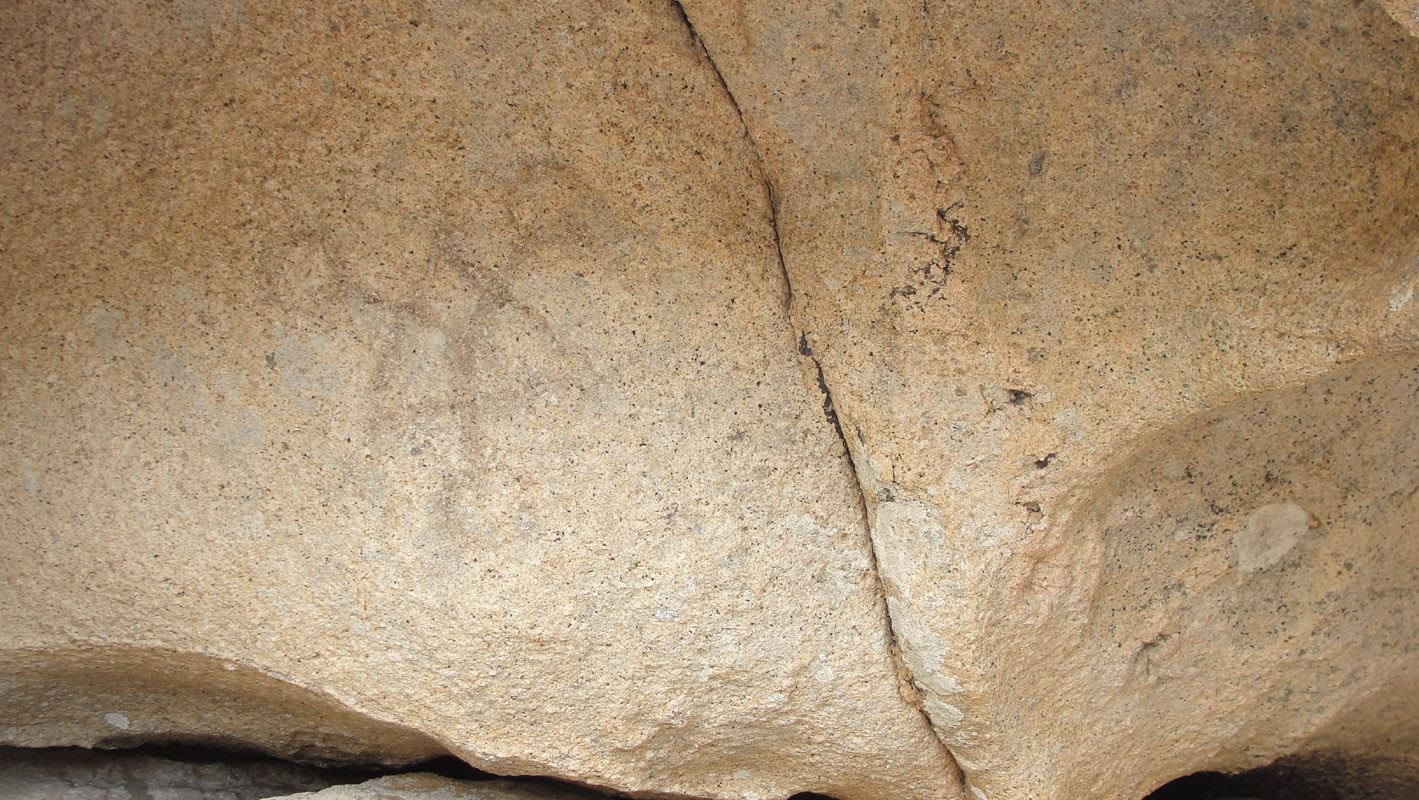The grave of the Giants of Is Concias
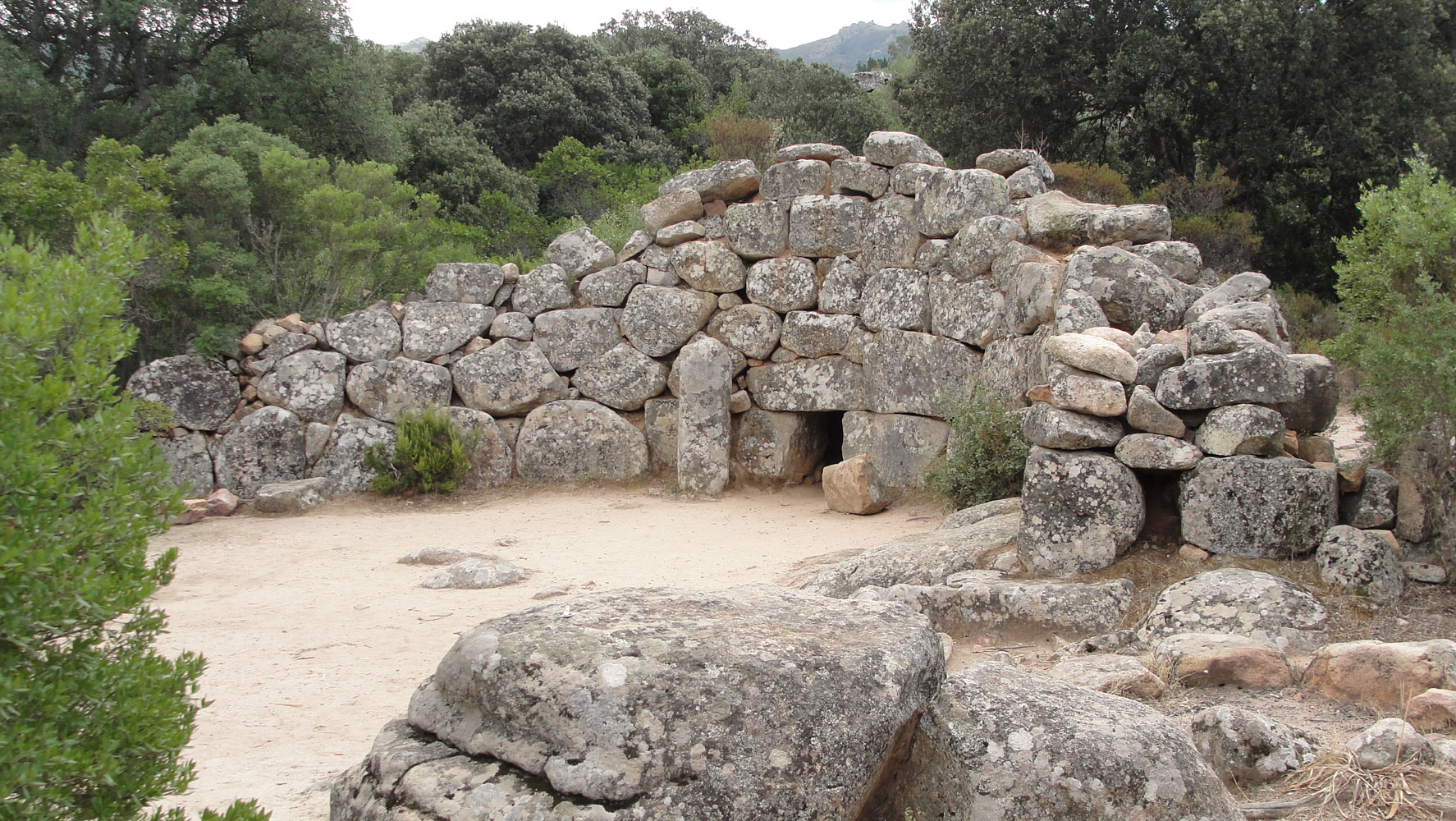
The grave of the Giants of Is Concias, is located in the municipality of Quartucciu, 10 km away. from Cagliari and is reached along the S.S. 125 that leads from Cagliari to Muravera. At Km 20.3 of S.S. 125, after the bridge over the Rio Longu in Piscina Nuxedda, turn right and after about 100 m. turn right again and continue for 800 m, until you meet on the right a road in which is the last sign of the archaeological area, from here you have to drive for about 6 km.
The graves of the giants have this name because the ancient inhabitants of Sardinia, seeing these huge archaeological structures, thought there had been buried gigantic beings (the interior corridor of is Concias tomb is 8 m. long), and actually there are a number of legends or popular rumors about the discovery of very large bones in these structures, while in reality were collective tombs for the community of a nuraghe or a nuragic village.
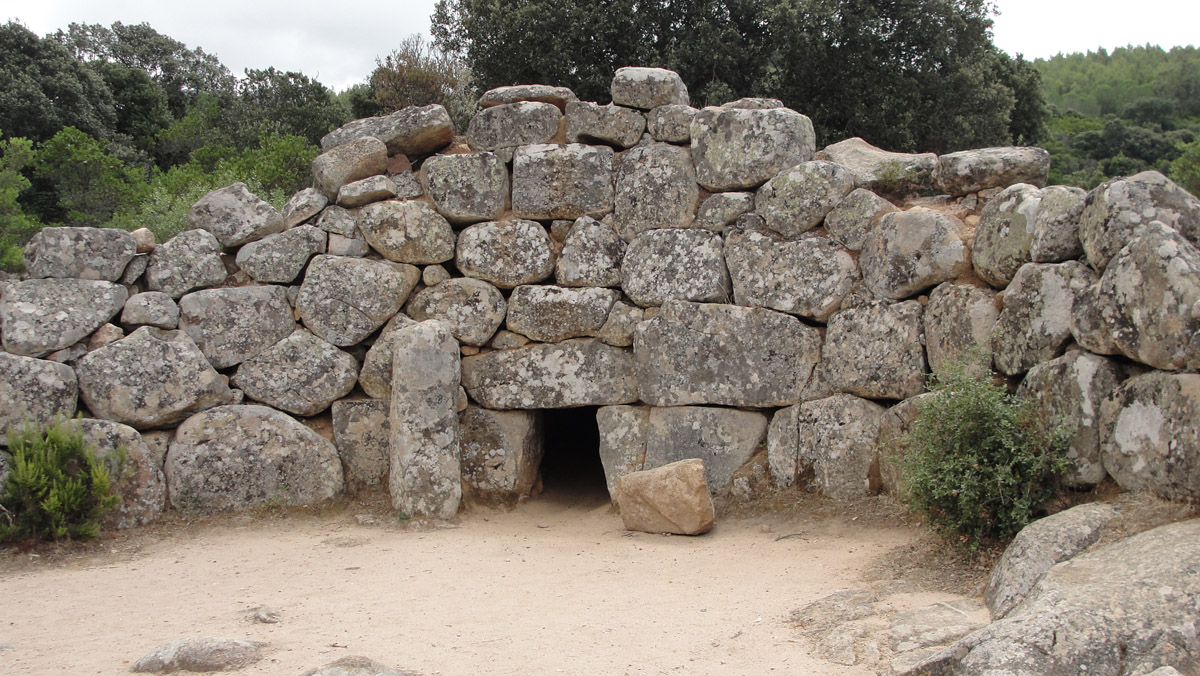
The grave of Is Concias has a facade “in rows”, a typical construction technique of the south of Sardinia (in the Giants Tombs of northern Sardinia instead we find a number of large stelae side by side, with a larger in the center with a in a horseshoe shape, and the others gradually decrease in size). Like all the tombs of the giants the facade is shaped curve, almost an embrace of mother earth ready to receive its children returning to her. At the entrance there was a baetylus, probably a representation of the male principle, according to some interpretations on the other hand had to be one breasted “feminine” now disappeared.
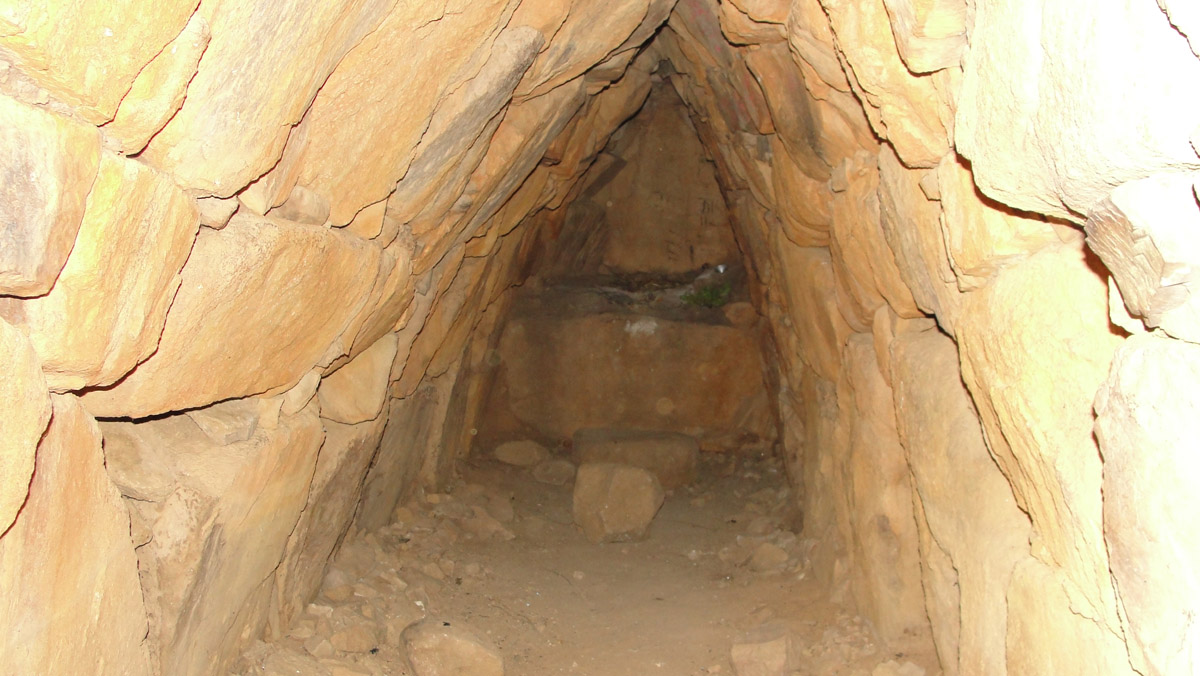
The entrance of the tomb is as always a small door, through which the dead was introduced. Inside there is a rectangular corridor with a section ogive built with masonry with large stones. At the bottom of the grave there is a niche above a shelf, probably a bank for offers. Outside the tomb, on the right, there are three “fires” or “votive wells”, probably also served for offerings to be left to the dead.
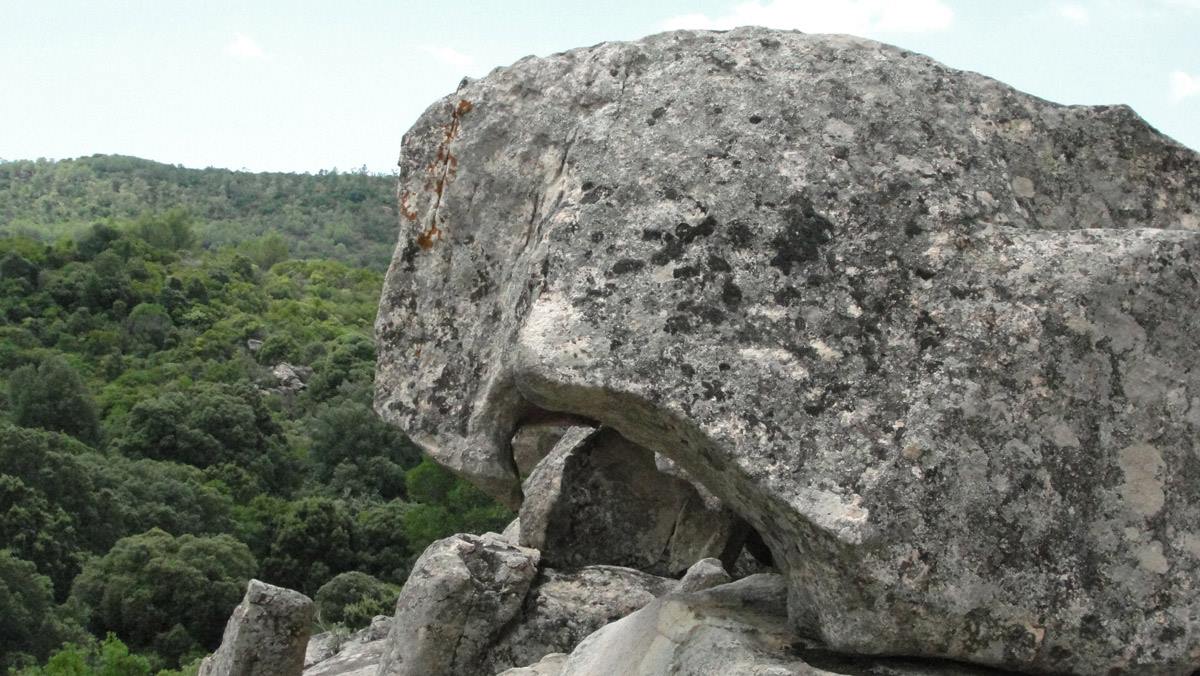
There is also a very interesting group of rocks that are located at the rear of the Tomb of the Giants, on the left, it is a seemingly “carved by the wind and atmospheric agents”, but actually in some areas it is possible that the intervention of a human hand could have helped natural erosion.
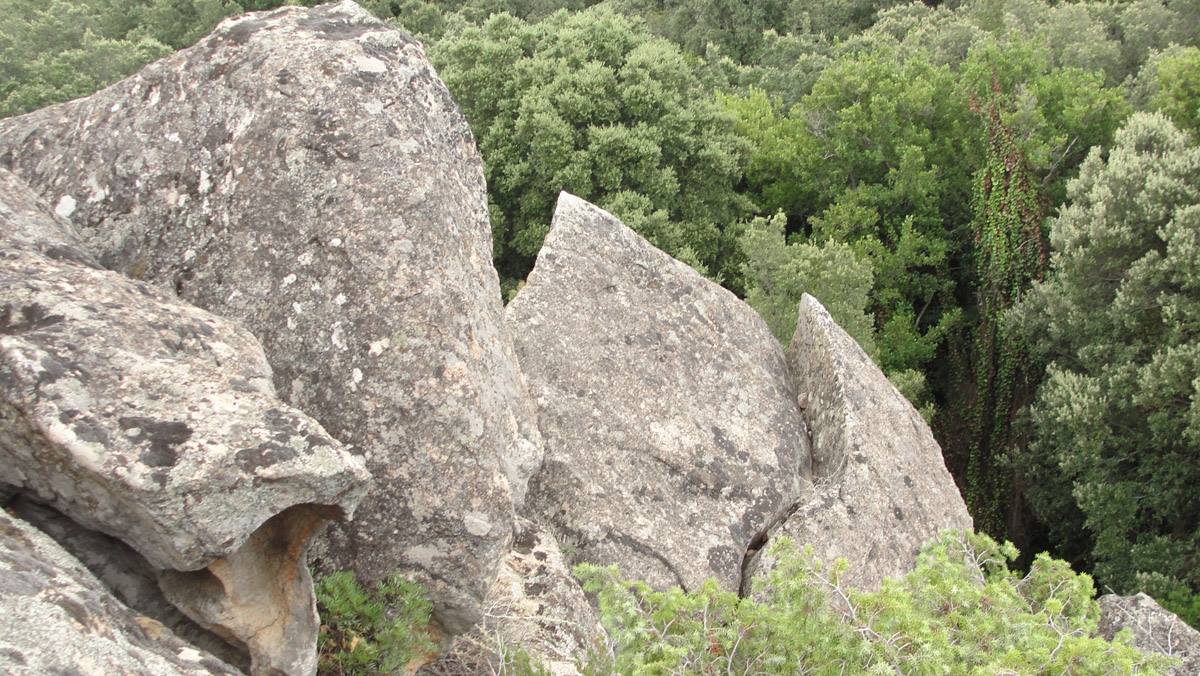
There are a rock shaped like an eagle, one snakelike, one similar to a skull and a cave with the profile of a face, with a petroglyphin the form of an eye located just in the point where there should be the eye of the face. Hidden in the rocks there are several interesting petroglyphs, one sun-shaped and another in the shape of triangle with lines coming out the middle of the sides and ending in three circles. The staff of the residence la Chimera can advise you how to get to the tomb, and explain the location of rocks and petroglyphs. If you visit the grave with children, we recommend that you make a stop at the nearby Diverland water park, where children can have fun and cool off after the cultural tour.
